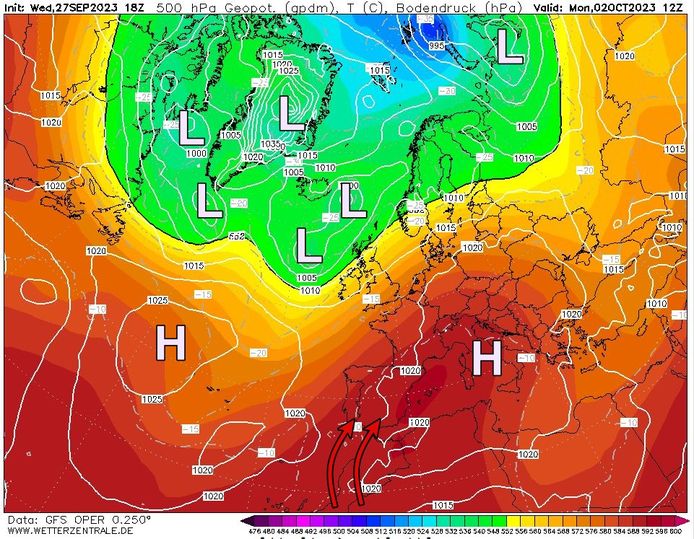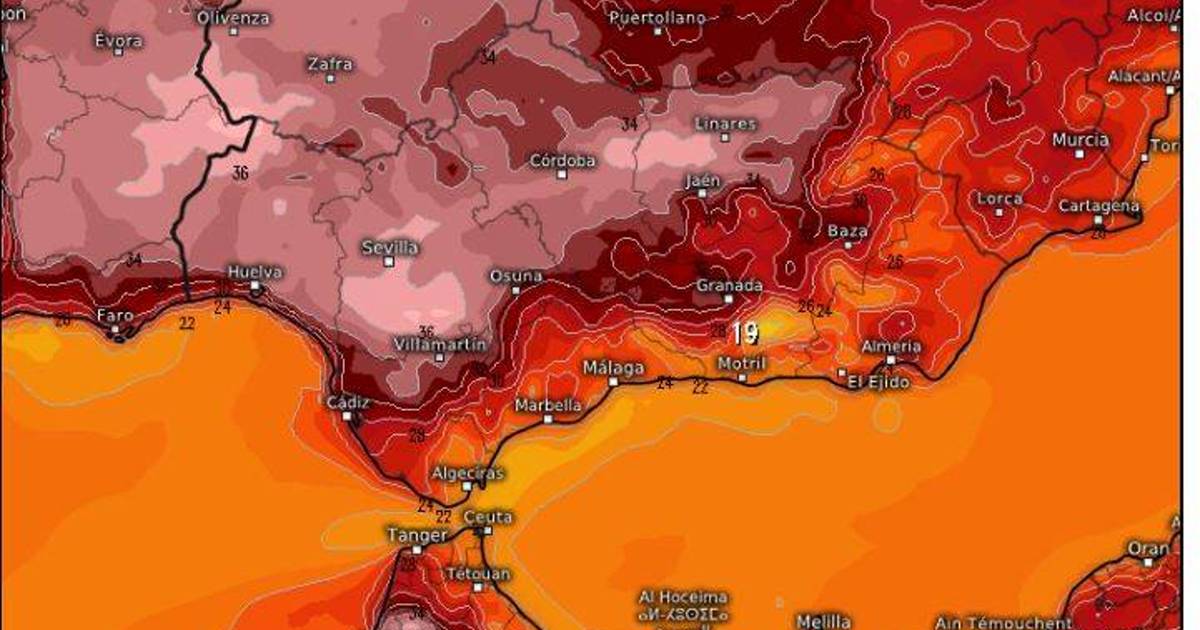Autumn may have begun, but there is little sign of it yet. Not only is it late summer for us at the moment, but this also applies to parts of Spain and Portugal. They will have to deal with a major heatwave there in the coming days. In the south of the Iberian Peninsula, the temperature can rise to 35 degrees Celsius and above for several days in a row. This is very unusual this late in the year. Therefore, meteorologists expect that many temperature records will be broken.
What causes a heat wave and how hot can it get?
A high pressure area controls the weather in southwestern Europe. At the end of the week, another persistent high pressure area will build up over the European mainland. This causes air to flow from south to southwest, with very warm and subtropical air in origin, supplied directly from Africa towards Spain and Portugal. Under the influence of this warm air flow, temperatures will rise sharply over parts of southern Spain and Portugal.
The high pressure area will ensure that the disturbance drifts away to the north, keeping it dry and very sunny over the Iberian Peninsula for several days. Under the radiant sun, temperatures rise sharply, especially in the southern regions. In the coming days, tropical temperatures are expected to range between 34 and 37 degrees Celsius per day in the area around Cordoba and Seville (Spain) as well as in the area around Beja (Portugal). Locally it may reach 38°C. Mercury can also rise to temperatures of around 30 degrees Celsius elsewhere in the interior. This makes it feel more like high summer than fall. Given the exceptionally high temperatures at the end of September and beginning of October, there is a great chance of breaking temperature records.
Read more below the picture

How long will the heat wave last?
The high pressure area that will continue to build through the end of the week appears to remain stable for a while, meaning warm air will remain over Spain and Portugal for a while. Tropical temperatures are expected to continue through the beginning of next week, and perhaps even for much of next week. Not only will it be warm, but it will also be dry for a long time. Little or no rain is expected over the next week.
How exceptional is this late heatwave over the Iberian Peninsula?
Indian summer with tropical temperatures in early autumn is not exceptional in Spain. It has even been given a local name. What we call “Old Wives Summer” or “Indian Summer” in Spain is called “Veranillo de San Miguel.” Veranillo, sometimes called Veroño, refers to the words “verano” (summer) and “otoño” (autumn). Saint San Miguel is commemorated on September 29. Climatologically, this is the day when the weather is warm and dry in Spain.
Although warm, dry weather is more common at this time of year, the upcoming heat period will be very exceptional. This has to do with the duration of the heat. Heat spikes this late in the year are usually short-lived. Now it will last for about a week. After all, there’s a good chance the heat will continue next week. The Spanish Meteorological Service warned of an “exceptional period of heat and drought.”
Sea ice has not been this low in Antarctica since measurements began: ‘Antarctica is no longer sensitive to climate change’ (+)
A moment of sun, then heavy rain: how is this possible? Meteorologist explains (+)
to explain. El Niño strikes: Extreme heat, drought and bushfires threaten Australia (+)
Free unlimited access to Showbytes? Which can!
Log in or create an account and never miss a thing from the stars.

“Creator. Award-winning problem solver. Music evangelist. Incurable introvert.”







More Stories
British military spy satellite launched – Business AM
Alarming decline in the Caspian Sea
Lithuania begins construction of military base for German forces